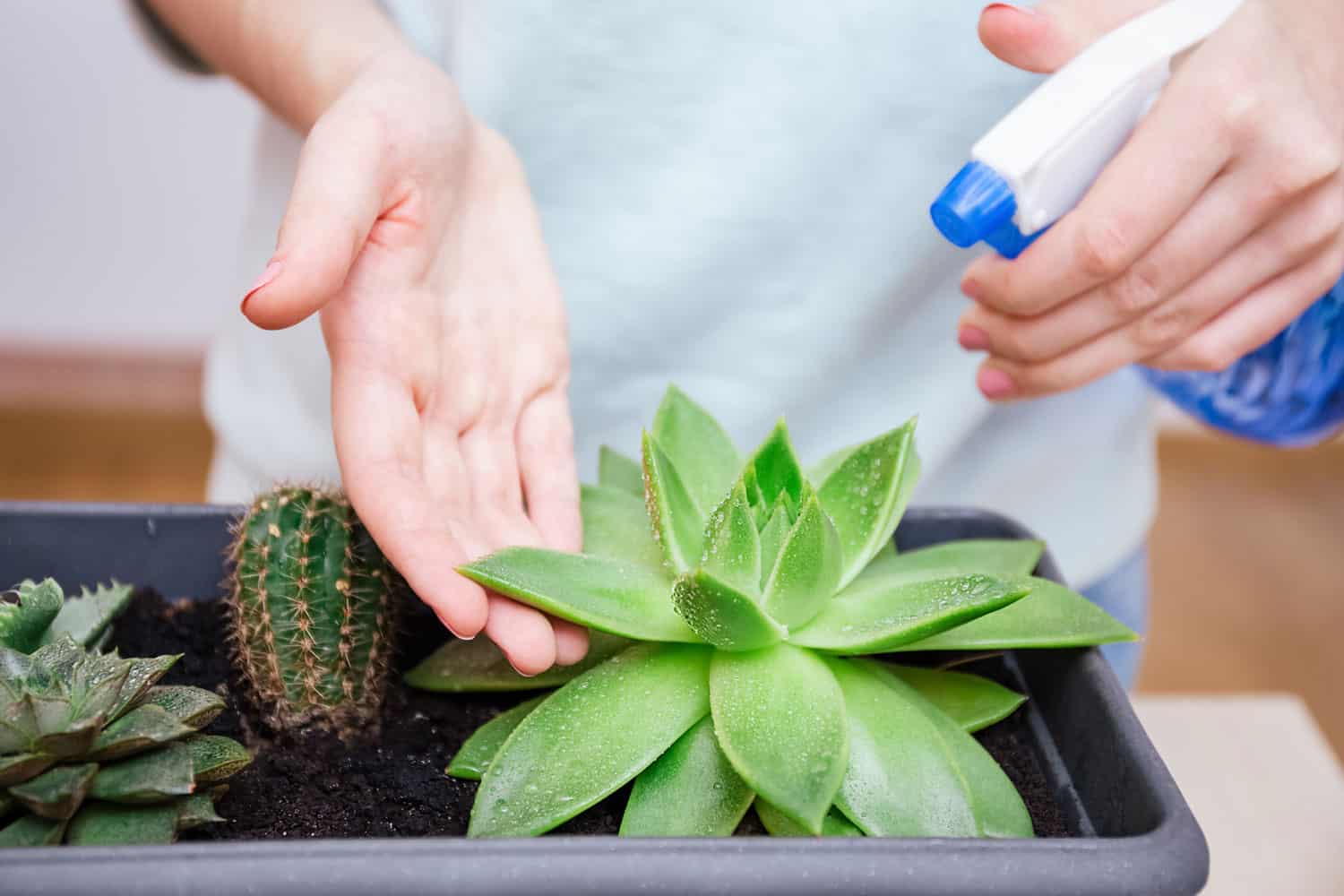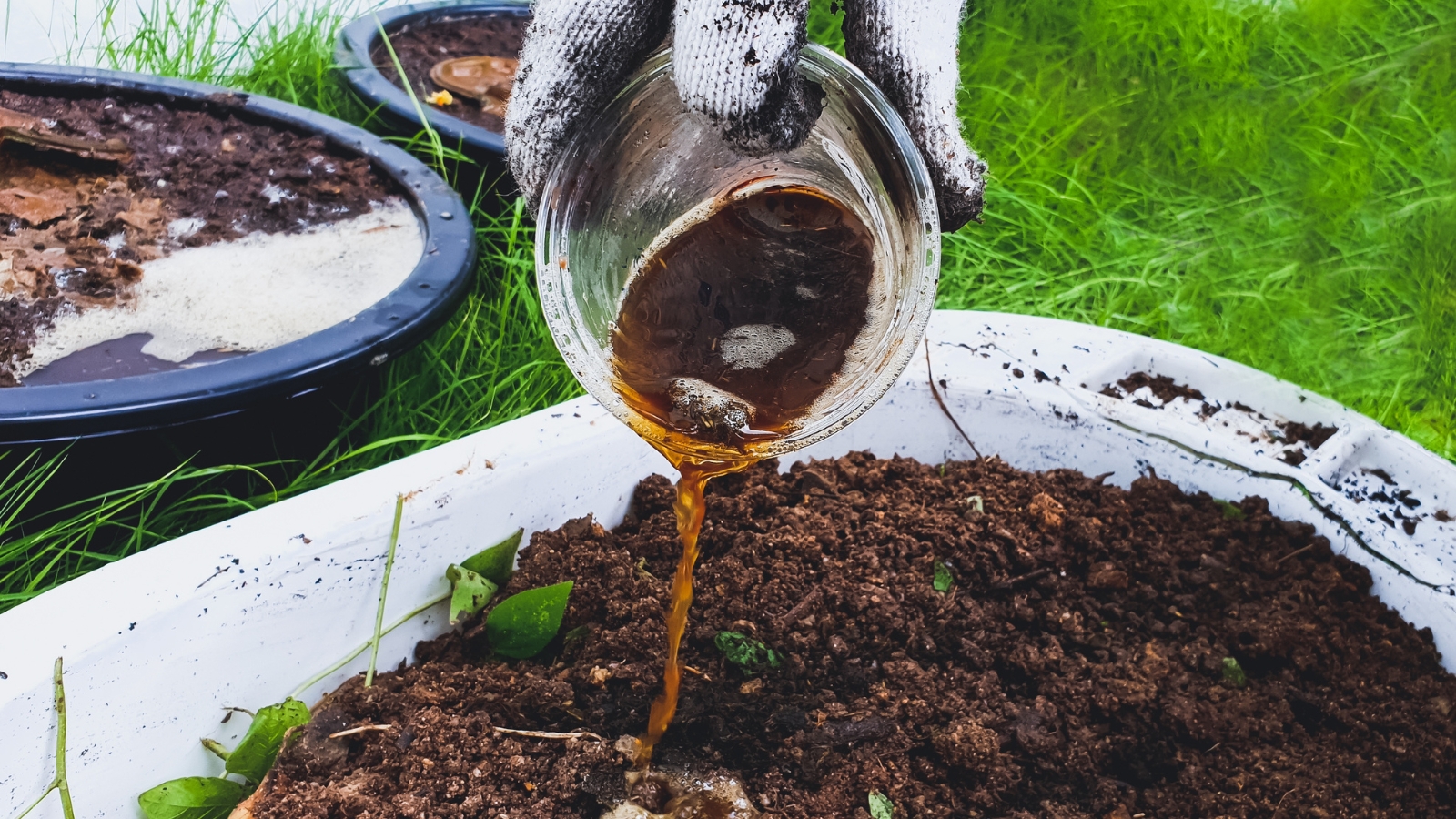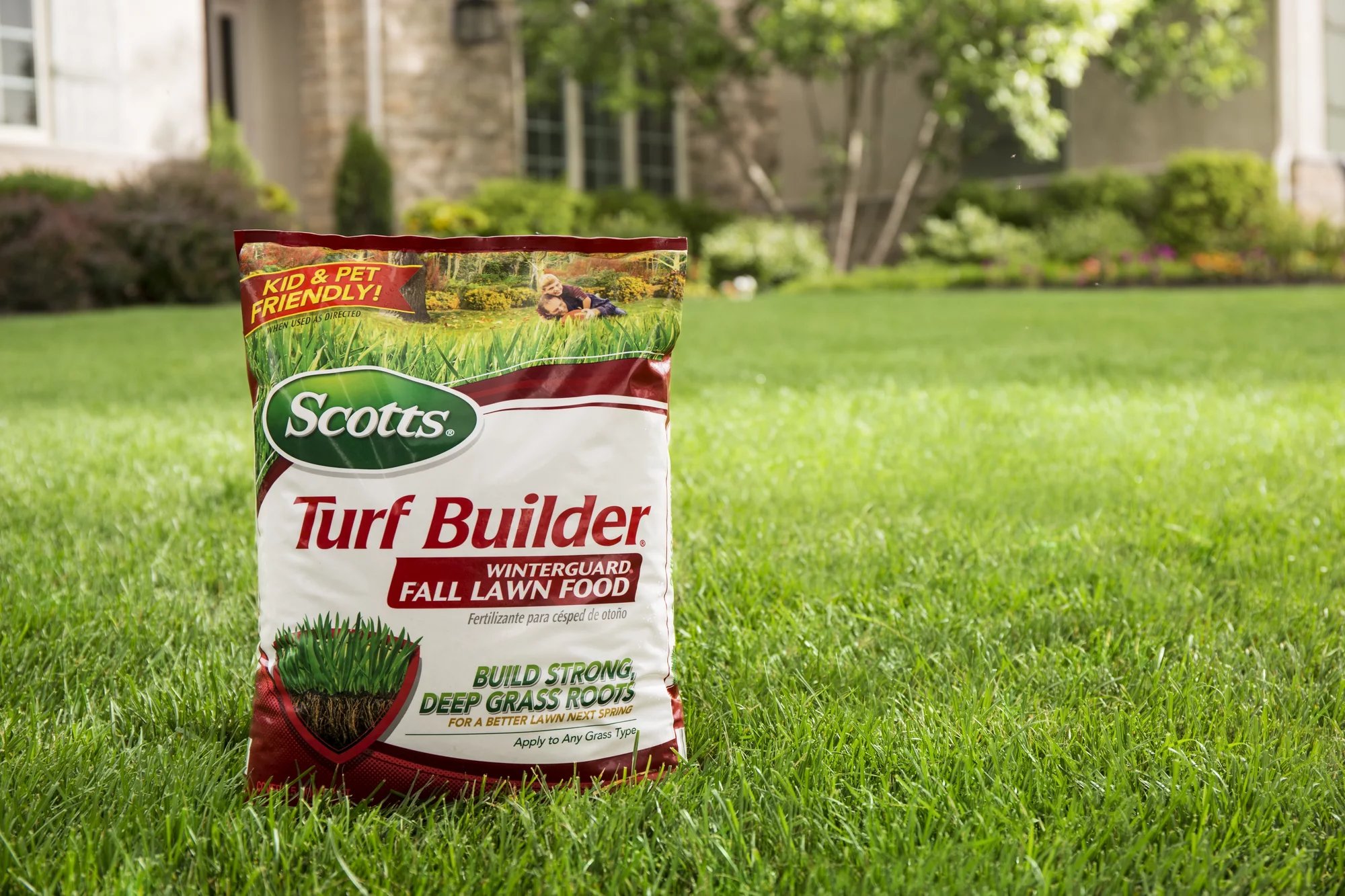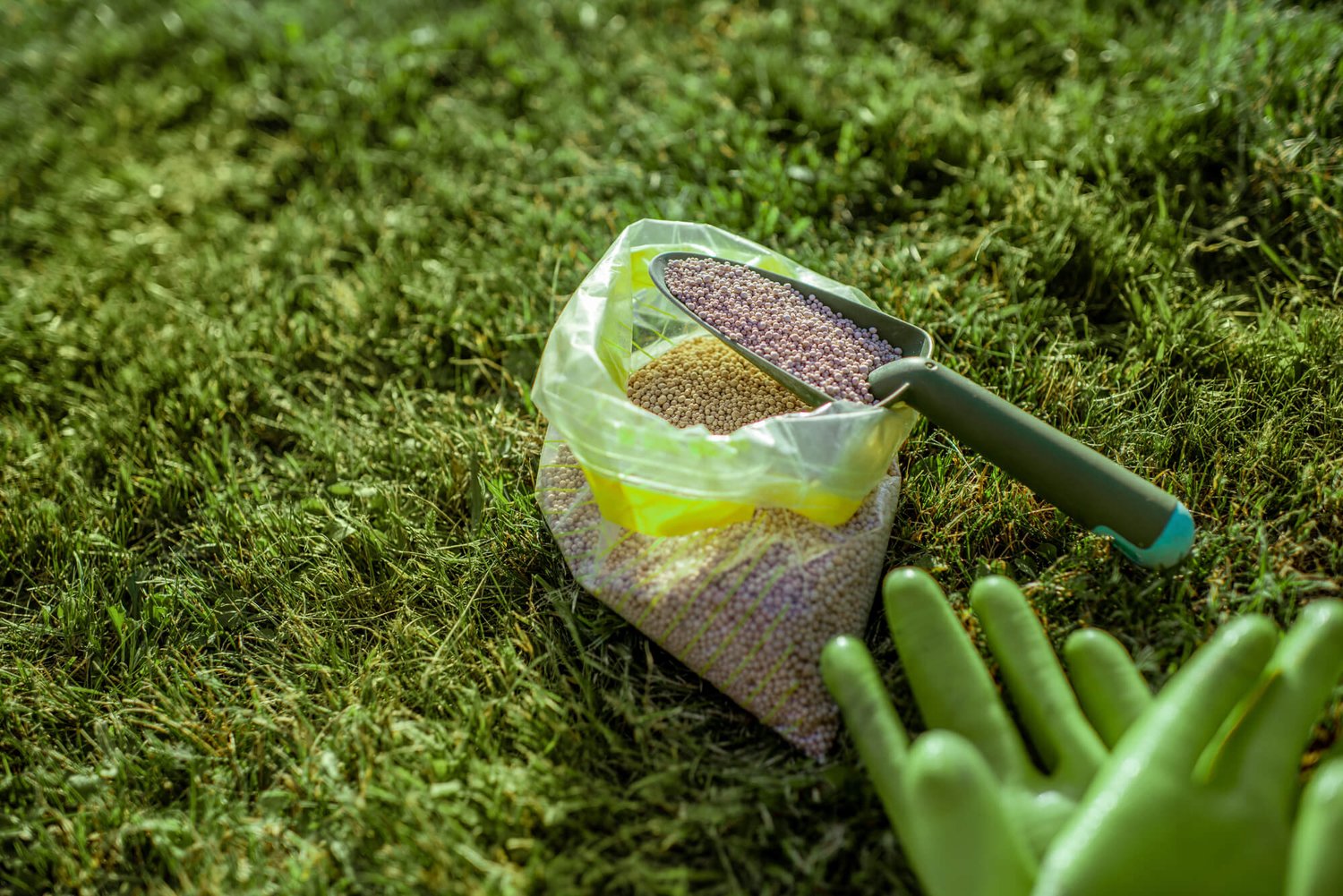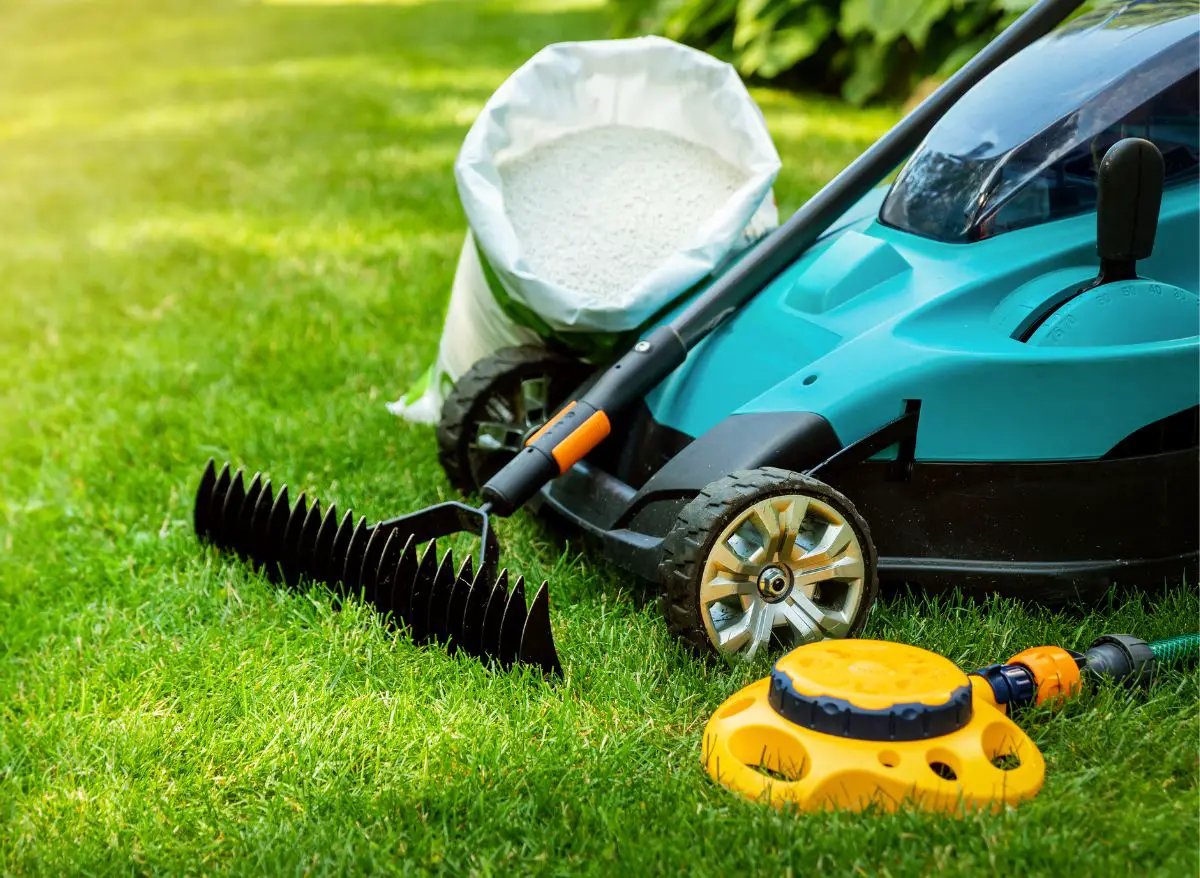Home>Types of Gardening>Edible Gardening>How Often Can You Apply Fertilizer To Your Lawn
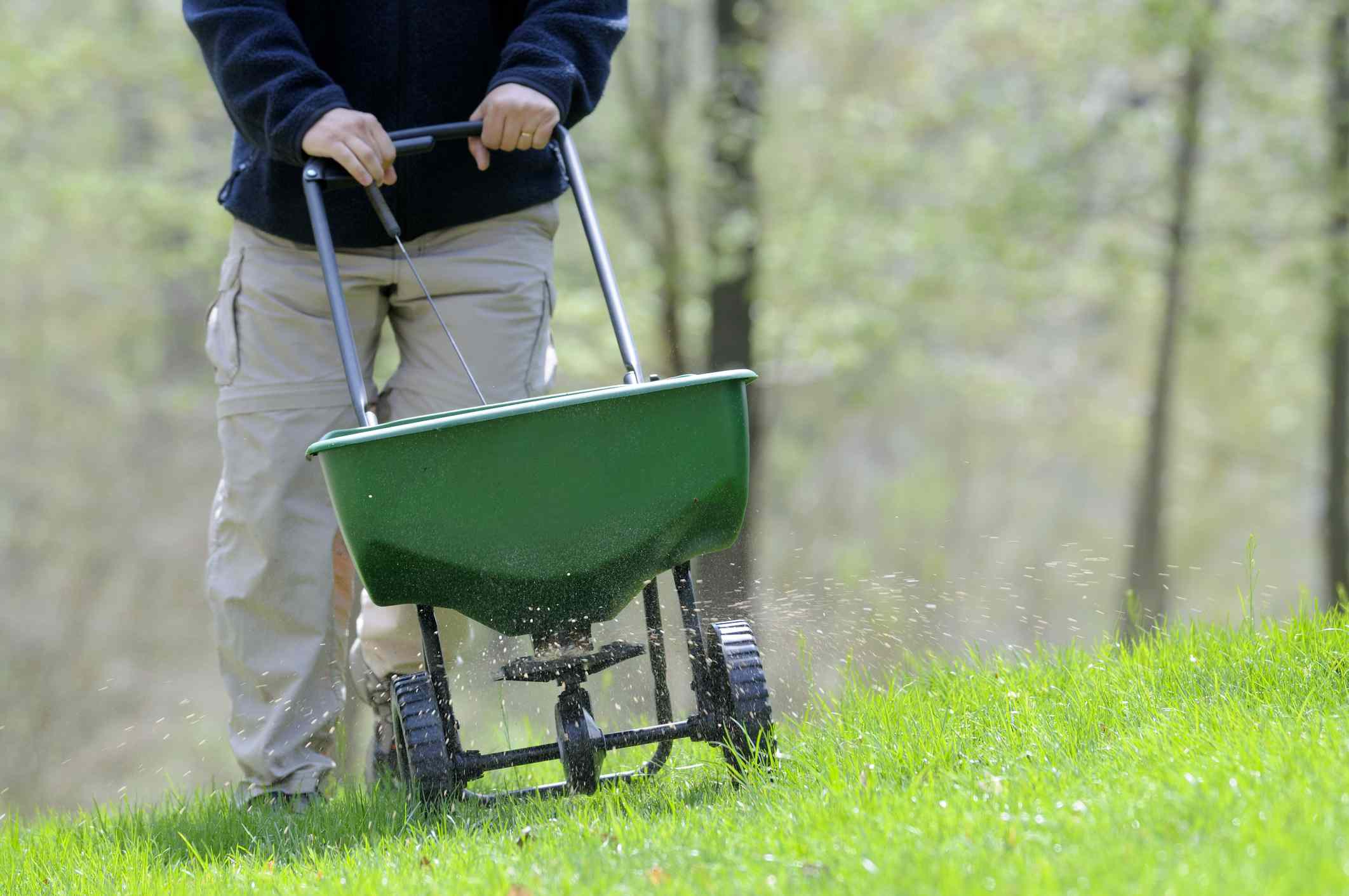

Edible Gardening
How Often Can You Apply Fertilizer To Your Lawn
Modified: January 22, 2024
Learn how often to apply fertilizer to your lawn for optimal results in your edible gardening endeavors. Discover the best practices for nourishing your lawn with our expert tips and advice.
(Many of the links in this article redirect to a specific reviewed product. Your purchase of these products through affiliate links helps to generate commission for Chicagolandgardening.com, at no extra cost. Learn more)
Table of Contents
- Introduction
- Factors to Consider Before Fertilizing Your Lawn
- Understanding the Different Types of Lawn Fertilizers
- Determining the Nutrient Needs of Your Lawn
- Recommended Fertilization Frequencies for Different Lawn Types
- Signs of Over-Fertilization and How to Prevent It
- Best Practices for Applying Fertilizer to Your Lawn
- Factors That May Affect the Frequency of Lawn Fertilization
- Conclusion
Introduction
Welcome to the world of edible gardening! There’s nothing quite like the satisfaction of growing your own fruits, vegetables, and herbs right in your own backyard. Not only is it a rewarding and fulfilling hobby, but it also allows you to have access to fresh, organic produce right at your fingertips.
Whether you’re a seasoned gardener or just starting out on your edible gardening journey, this comprehensive guide will provide you with all the information you need to successfully grow your own edible plants. From choosing the right location to understanding soil composition and fertilization techniques, we will cover it all.
Edible gardening is not only a sustainable and eco-friendly practice but also a great way to save money and ensure that you know exactly what is going into your food. Plus, there’s something incredibly satisfying about plucking a juicy tomato or crisp lettuce leaf from your garden and incorporating it into your meals.
In this guide, we will explore various topics such as selecting the right plants for your climate, understanding pest and disease management, and maximizing the use of space in your garden. Whether you have a sprawling backyard or a tiny balcony, there’s a way for everyone to enjoy the benefits of edible gardening.
We will also delve into the importance of organic gardening practices and how to create a sustainable and healthy ecosystem in your garden. From composting to natural pest control methods, we will explore ways to minimize the use of harmful chemicals and toxins in your edible garden.
So, if you’re ready to embark on this exciting journey of growing your own delicious fruits, vegetables, and herbs, let’s get started! Get your gardening tools ready and prepare to cultivate a bountiful edible garden that will not only nourish your body but also feed your soul.
Factors to Consider Before Fertilizing Your Lawn
Fertilizing your lawn is an important aspect of lawn care that can help promote healthy growth and vibrant green color. However, before you rush out to purchase fertilizer, there are several factors you need to consider to ensure that you are making the right choices for your lawn and the environment.
The first factor to consider is the type of grass in your lawn. Different grass species have varying nutrient requirements, so it’s crucial to identify the type of grass you have before selecting a fertilizer. Cool-season grasses, such as Kentucky bluegrass and fescue, have different needs compared to warm-season grasses like Bermuda grass and St. Augustine grass.
Another important consideration is the time of year. Fertilizing should be done at the appropriate time to maximize the benefits. For cool-season grasses, it’s best to apply fertilizer in the early spring and fall when the grass is actively growing. On the other hand, warm-season grasses benefit from fertilization during their peak growing season in the late spring and summer.
Soil testing is also essential before fertilizing. A soil test will provide valuable information about the nutrient levels in your soil, allowing you to choose the right type and amount of fertilizer. It can also indicate any deficiencies or imbalances that need to be corrected. You can easily obtain a soil testing kit from your local extension office or a reputable garden center.
Furthermore, consider the environmental impact of fertilizing. Avoid over-application of fertilizers, as excess nutrients can leach into groundwater and pose a risk to the environment. Opt for slow-release or organic fertilizers whenever possible, as they provide a more controlled release of nutrients and are less likely to cause environmental harm.
Finally, take into account any specific lawn issues you may have. If your lawn is experiencing weed or pest problems, it’s important to address those issues before fertilizing. Fertilizing a lawn that already has issues can exacerbate the problem and may not yield the desired results.
By carefully considering these factors before applying fertilizer to your lawn, you can ensure that you are making informed choices that will promote the health and beauty of your lawn while minimizing environmental impact.
Understanding the Different Types of Lawn Fertilizers
When it comes to fertilizing your lawn, there are several types of fertilizers available on the market. Understanding the differences between these types is essential in order to choose the right fertilizer for your specific lawn needs. Let’s take a closer look at the most common types of lawn fertilizers:
- Granular Fertilizers: Granular fertilizers are the most widely used type of lawn fertilizers. They come in small pellets or granules that are spread evenly across the lawn using a spreader. Granular fertilizers release nutrients slowly over time, providing a steady supply of essential elements to the grass. They are easy to use and offer long-lasting results.
- Liquid Fertilizers: Liquid fertilizers are another popular choice for lawn fertilization. They are applied using a sprayer or hose-end applicator and provide a quick source of nutrients for the grass. Liquid fertilizers are fast-acting and are absorbed by the grass blades and roots more rapidly than granular fertilizers. They are often used for spot treatments or quick lawn green-up.
- Synthetic Fertilizers: Synthetic or chemical fertilizers are manufactured products that contain specific ratios of nitrogen (N), phosphorus (P), and potassium (K) – the three main macronutrients required by plants. They provide fast results and allow for precise control of nutrient levels. However, synthetic fertilizers can pose environmental risks if overused or misapplied.
- Organic Fertilizers: Organic fertilizers are derived from natural sources such as plant matter, animal waste, or minerals. They are often slow-release, providing a gradual and long-lasting supply of nutrients to the lawn. Organic fertilizers improve soil health, promote beneficial microbial activity, and are considered environmentally friendly. However, they may require larger quantities and a longer time to see noticeable results.
- Specialty Fertilizers: Specialty fertilizers are formulated to address specific lawn needs. They may include formulations for weed control, insect control, or disease prevention. Specialty fertilizers are typically used in conjunction with a regular fertilization program to target specific lawn issues and promote a healthy, lush lawn.
Each type of fertilizer has its own advantages and considerations, so it’s important to choose the one that aligns with your lawn’s specific needs and your personal preferences. Consider factors such as cost, application method, nutrient requirements, and environmental impact when selecting the right fertilizer for your lawn.
Keep in mind that proper application and timing are essential for maximizing the benefits of any fertilizer. Always follow the manufacturer’s instructions and avoid over-fertilization, as it can lead to nutrient imbalances or environmental harm. Regular soil testing can also help guide your fertilizer selection and ensure that your lawn receives the nutrients it needs to thrive.
Determining the Nutrient Needs of Your Lawn
Understanding the nutrient needs of your lawn is crucial for maintaining a healthy and thriving turf. Different grass species and soil conditions require varying levels of nutrients to support optimal growth. Here are some key factors to consider when determining the nutrient needs of your lawn:
Grass Type: Different grass species have different nutrient requirements. Cool-season grasses such as Kentucky bluegrass and fescue typically prefer a higher nitrogen (N) content in their fertilizer, while warm-season grasses like Bermuda grass and St. Augustine grass have different preferences. Research the specific nutrient needs of your grass type to ensure that you provide the right balance of essential elements.
Soil Testing: Conducting a soil test is an excellent way to assess the nutrient levels in your soil. A soil test will measure the pH, organic matter content, and nutrient levels, allowing you to make informed decisions about fertilization. It can also help identify any deficiencies or imbalances that need to be addressed. Contact your local extension office or a reputable laboratory to obtain a soil testing kit.
Macronutrients: The three primary macronutrients that lawns require are nitrogen (N), phosphorus (P), and potassium (K). Nitrogen promotes leaf and stem growth, phosphorus supports root development, and potassium enhances overall plant health and stress resistance. Understanding the specific nutrient needs of your grass type will help you select a fertilizer with the appropriate N-P-K ratio.
Micronutrients: In addition to the macronutrients, lawns also require small quantities of essential micronutrients, including iron, manganese, zinc, and others. While these micronutrients are required in smaller amounts, they play a vital role in the overall health and appearance of your lawn. Consider using a fertilizer that includes micronutrients or applying a separate micronutrient supplement if necessary.
Growth Stage: The growth stage of your lawn also influences its nutrient needs. Newly established lawns or recently overseeded areas may require extra phosphorus to support root development. Lawns undergoing stress, such as from drought or heavy foot traffic, may benefit from additional potassium to promote resilience.
Environmental Factors: Environmental conditions, such as rainfall, temperature, and sun exposure, can impact your lawn’s nutrient requirements. During periods of heavy rainfall or excessive irrigation, nutrients may be leached from the soil more quickly, requiring more frequent fertilization. High temperatures or drought conditions may warrant adjustments to the nutrient application rates to prevent burning or stress to the lawn.
By carefully considering these factors, you can determine the specific nutrient needs of your lawn and make informed decisions about fertilization. Regular monitoring of your lawn’s health and visual appearance will also help you identify any signs of nutrient deficiencies or excesses, allowing you to adjust your fertilization practices accordingly. Remember that proper fertilization, in combination with good cultural practices, will help ensure a lush, healthy, and vibrant lawn.
Recommended Fertilization Frequencies for Different Lawn Types
Proper fertilization is essential for maintaining a healthy and vibrant lawn. However, the frequency at which you should fertilize your lawn depends on several factors, including the type of grass, climate, and soil conditions. Here are some general guidelines for fertilization frequencies for different lawn types:
Cool-Season Grasses: Cool-season grasses, such as Kentucky bluegrass, fescue, and ryegrass, thrive in regions with cooler temperatures. For these grasses, it is recommended to fertilize in the early spring and fall. Start with a slow-release nitrogen fertilizer in the spring to promote growth and recovery from winter dormancy. In the fall, apply a fertilizer with a higher potassium content to help with winter hardiness and root development.
Warm-Season Grasses: Warm-season grasses like Bermuda grass, Zoysia grass, and St. Augustine grass have different fertilization requirements. These grasses experience peak growth during the summer months. It is best to fertilize warm-season grasses in late spring, just before the peak growing season begins. Apply a slow-release nitrogen fertilizer to promote healthy growth. Additional applications can be made throughout the summer if needed, but avoid heavy fertilization during periods of drought or high temperatures to reduce stress on the grass.
Mixed Lawns: In regions where both cool-season and warm-season grasses are present, it’s important to follow a fertilization schedule that caters to both types. Fertilize cool-season grasses in the early spring and fall as mentioned earlier. For warm-season grasses, apply fertilizer in late spring and consider additional applications during the summer if required.
High-Maintenance Lawns: Some homeowners prefer high-maintenance lawns, characterized by a well-manicured appearance and lush green color. These lawns often require more frequent fertilization. Depending on the grass type and climate, you may need to fertilize every 4 to 6 weeks during the growing season. However, make sure to follow label instructions and avoid over-fertilization, as it can lead to nutrient imbalances and harm the environment.
Low-Maintenance Lawns: If you prefer a low-maintenance lawn, you can reduce the frequency of fertilization. Applying fertilizer once or twice a year, depending on the grass type, is often sufficient to provide adequate nutrients for these lawns. However, be sure to select a slow-release fertilizer that provides a steady supply of nutrients over a longer period of time.
It’s important to note that the recommended fertilization frequencies are general guidelines. Factors such as soil conditions, climate, and specific grass varieties may require adjustments to the fertilization schedule. Additionally, always refer to the specific needs and recommendations for your particular grass type to ensure optimal lawn health.
Signs of Over-Fertilization and How to Prevent It
Fertilizing your lawn is essential for promoting healthy growth, but it’s important to avoid over-fertilization. Applying too much fertilizer can result in nutrient imbalances, environmental harm, and damage to your lawn. Here are some signs of over-fertilization to watch out for and steps you can take to prevent it:
Burned or Brown Patches: One of the most obvious signs of over-fertilization is the appearance of burned or brown patches on your lawn. Excessive nutrients can cause the grass to become stressed and exhibit signs of scorching. If you notice brown, dry, or dead patches on your lawn after fertilizing, it’s a clear indication that you’ve applied too much fertilizer.
Excessive Growth: Over-fertilized lawns often display an increase in growth rate. While this may sound desirable, it can lead to weak and leggy growth that is more susceptible to disease and pest infestations. If your lawn is growing rapidly and requires frequent mowing, it could be a sign of excessive fertilization.
Thatch Buildup: Thatch is a layer of dead or decaying grass stems and roots that accumulates at the surface of the soil. Over-fertilizing can contribute to excessive thatch buildup, as the grass grows faster and produces more organic matter. Thick thatch prevents water and nutrients from reaching the roots, leading to a weakened lawn.
Environmental Impact: Overuse of fertilizers can have a negative impact on the environment. Excess nutrients, especially nitrogen and phosphorus, can leach into groundwater or runoff into nearby water bodies, causing water pollution. It can also contribute to algal blooms and other harmful effects on aquatic ecosystems. It’s vital to follow recommended application rates and avoid applying fertilizer near waterways or before heavy rainfall.
To prevent over-fertilization, follow these steps:
- Conduct a Soil Test: Before fertilizing, perform a soil test to determine the nutrient levels and pH of your soil. This will help you choose the right type and amount of fertilizer needed for your lawn.
- Read and Follow Label Instructions: Always read and follow the instructions on the fertilizer package. Pay attention to the recommended application rates and timing.
- Use Slow-Release Fertilizers: Consider using slow-release fertilizers that release nutrients gradually over time. This helps prevent excess nutrients from leaching out and reduces the risk of over-fertilization.
- Avoid Spot Treatments: When applying fertilizer, avoid concentrating it in specific areas. Ensure even and uniform application to prevent localized over-fertilization and potential damage to the grass.
- Water Properly: Water your lawn deeply and infrequently to help flush out any excess fertilizer and prevent nutrient buildup. Watering correctly also helps promote healthy root growth and nutrient absorption.
By being vigilant about the signs of over-fertilization and following the preventive measures outlined above, you can maintain a healthy and thriving lawn while minimizing the risk of nutrient imbalances and environmental harm.
Best Practices for Applying Fertilizer to Your Lawn
Applying fertilizer correctly is crucial for achieving optimal results and maintaining a healthy lawn. Here are some best practices to follow when applying fertilizer to your lawn:
- Timing: Apply fertilizer during the appropriate season and when your lawn is actively growing. The timing may vary depending on your grass type and regional climate. Refer to local gardening resources or consult with a professional to determine the best time for fertilization in your area.
- Preparation: Before applying fertilizer, mow your lawn to the desired height and remove any debris like leaves or twigs. This ensures better contact between the fertilizer and the soil, allowing for more effective nutrient absorption.
- Measure Accurately: Use a calibrated spreader to ensure accurate and even distribution of the fertilizer. This helps avoid over-application in certain areas and under-application in others. Follow the instructions on the fertilizer packaging for the appropriate spreader setting to use.
- Avoid Excess: Over-fertilization can harm your lawn and the environment. Always follow the recommended application rates specified on the fertilizer packaging. Remember, it’s better to slightly under-apply fertilizer than to over-apply and risk damaging your lawn.
- Uniform Coverage: Apply fertilizer in a uniform pattern to ensure consistent coverage across your lawn. Consider using a crisscross pattern or overlapping passes to achieve an even distribution. This prevents patchy growth and promotes a uniform green color throughout your lawn.
- Stay off Treated Areas: After applying fertilizer, avoid walking or mowing on the treated areas until the fertilizer has been watered in or has dissolved. This helps prevent fertilizer particles from being tracked into other areas of your lawn and reduces the risk of uneven distribution.
- Watering: After applying fertilizer, water your lawn lightly to help the nutrients penetrate the soil. This is especially important for granular fertilizers, as it helps them dissolve and release nutrients. However, avoid excessive watering, as it can lead to nutrient runoff and wastage.
- Clean Equipment: After use, clean your spreader and any other equipment used to apply the fertilizer. Leftover fertilizer can corrode metal parts and cause clogs in the equipment. Cleaning ensures that your tools remain in good condition and are ready for future use.
- Environmental Considerations: Always be mindful of the potential environmental impact of fertilizer use. Avoid applying fertilizer near water bodies or on slopes where runoff is likely to occur. Follow local regulations and guidelines to minimize the risk of nutrient runoff and water pollution.
By following these best practices, you can ensure that your lawn receives the right amount of fertilizer, resulting in healthy growth, vibrant color, and a lush, well-maintained appearance.
Factors That May Affect the Frequency of Lawn Fertilization
The frequency of lawn fertilization can vary based on several factors that influence the nutrient requirements of your lawn. Understanding these factors will help you determine the optimal fertilization schedule for your specific lawn. Here are some key factors that can affect the frequency of lawn fertilization:
Grass Type: Different grass species have different growth rates and nutrient requirements. Some grasses, such as Kentucky bluegrass and Bermuda grass, have faster growth rates and may require more frequent fertilization compared to slower-growing grasses like fescue or Zoysia grass.
Soil Conditions: The health and composition of your soil can impact the frequency of fertilization. Nutrient-rich soils may require less frequent fertilization, while nutrient-deficient soils may need more regular fertilization to supplement the essential elements required by the grass. Conducting a soil test can provide valuable insights into the nutrient levels and pH of your soil, helping you make informed decisions about fertilization frequency.
Climate: Regional climate plays a significant role in determining the frequency of fertilization. Warmer climates with long growing seasons may require more frequent fertilization to support the grass’s increased demand for nutrients. In contrast, cooler climates with shorter growing seasons may necessitate fewer applications of fertilizer. Consider the average temperature and precipitation patterns in your region when determining the fertilization schedule for your lawn.
Environmental Factors: Various environmental factors can impact the nutrient requirements of your lawn. For instance, heavy rainfall can lead to nutrient leaching, requiring more frequent fertilization to replenish lost nutrients. Similarly, drought conditions may necessitate adjustments to fertilization frequency to prevent stress on the grass.
Overall Maintenance Practices: The level of maintenance and care you provide for your lawn can influence the fertilization frequency. Lawns that receive proper cultural practices like regular mowing, adequate watering, and proactive weed control may require less frequent fertilization. On the other hand, high-maintenance lawns that undergo intense use or have specific aesthetic requirements might benefit from more frequent fertilization to support their growth and recovery.
Desired Appearance: Your personal preferences and expectations for your lawn’s appearance can also impact the frequency of fertilization. If you desire a consistently lush and green lawn with a manicured look, you may choose to fertilize more frequently. However, if you prefer a more natural and low-maintenance lawn, it’s possible to reduce the frequency of fertilization accordingly.
Considering these factors, it’s important to strike a balance when determining the frequency of lawn fertilization. Regularly monitor the condition of your lawn, perform soil tests, and make adjustments as needed to ensure that your grass receives the appropriate amount of nutrients for healthy growth and long-term vitality.
Conclusion
Fertilizing your lawn plays a vital role in maintaining a healthy and vibrant turf. By considering various factors such as grass type, soil conditions, climate, and environmental factors, you can determine the optimal frequency and type of fertilizer for your lawn. Understanding the nutrient needs of your lawn and following best practices for fertilization will help ensure that your grass thrives while minimizing the risk of over-fertilization and environmental harm.
Remember to choose the right fertilizer for your specific grass type, considering its growth habits and nutrient requirements. Conducting a soil test will provide valuable insights into your soil’s nutrient levels and pH, guiding your fertilizer selection and application rates. Applying fertilizer at the appropriate time of year and in a uniform manner will help promote even growth and vibrant color throughout your lawn.
Regular monitoring of your lawn’s health, including observing signs of over-fertilization and adjusting fertilization practices as needed, is crucial for maintaining optimal turf quality. By following recommended practices and adhering to local environmental regulations, you can promote the health and beauty of your lawn while protecting the surrounding ecosystem.
Lastly, it’s important to note that the information provided in this guide serves as general guidelines. Factors such as regional climate, specific grass species, and individual lawn conditions may require adjustments to the fertilization frequency and application rates. Consulting with local experts or professionals in your area can provide further guidance tailored to your specific lawn’s needs.
With proper fertilization practices, your lawn can become a lush, healthy, and visually appealing landscape that enhances the beauty of your home. So, armed with knowledge and a commitment to sustainable lawn care, go ahead and give your lawn the nutrients it needs to thrive and create an outdoor space you can truly enjoy.
